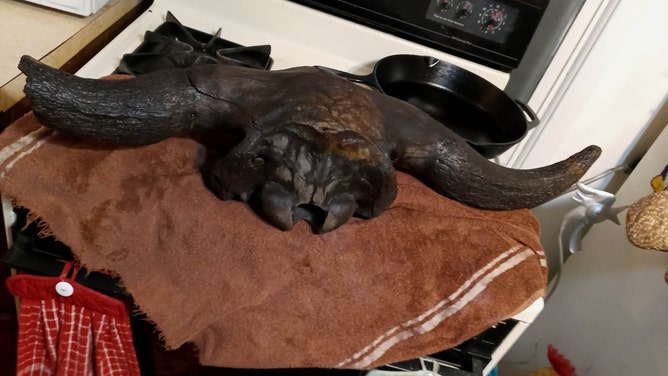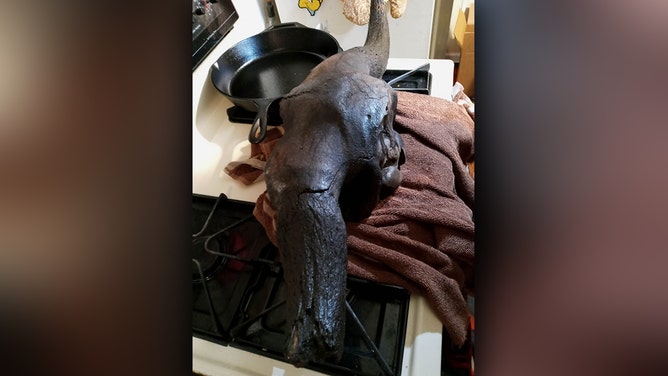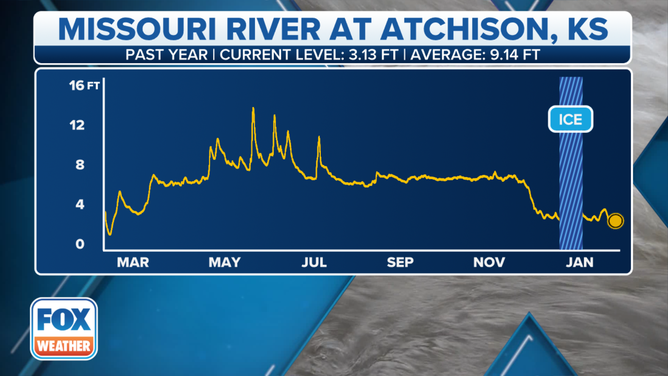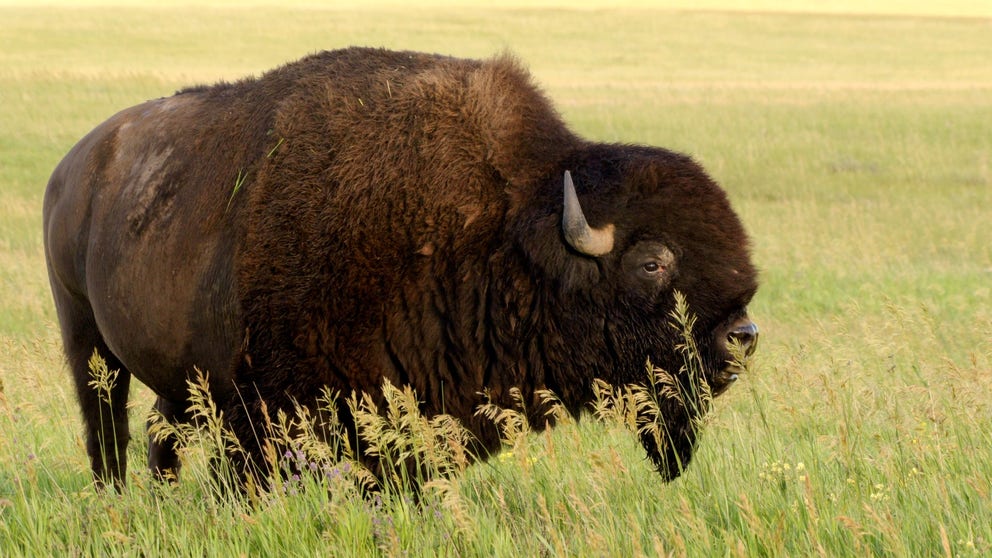‘Never know what you’re going to come across’: Possible prehistoric bison fossil unearthed in Missouri
David Jamerson and Mike Ruth were bottle hunting on Jan. 8 along the dried-up banks of the Missouri River near downtown Kansas City when they unearthed a possible prehistoric bison skull.
How the bison became a symbol for America
At home on the range, the country's national mammal has a long and dramatic history.
KANSAS CITY, Mo. – David Jamerson and Mike Ruth are just some good old boys, never meanin' no harm.
They aren't the modern-day Dukes of Hazzard, but they sure are makin' their way the only way they know how by scavenging along the banks of the Missouri River.
The two were bottle hunting on Jan. 8 along the dried-up banks of the river at Riverfront Park near downtown Kansas City, Missouri, when they unearthed their latest treasure, that's likely prehistoric.
Jamerson, a 30-year-old auto mechanic, and Ruth, a 44-year-old asphalt construction worker, have found handfuls of arrowheads and prohibition-era whiskey bottles in the past. Yet when they stumbled upon what was once thought to be a piece of petrified driftwood, a much larger surprise unfolded.
"When I went to pick it up … there was a skull attached to it and another horn thing," Jamerson recalled. "It wasn’t wood. I didn’t know what the hell it was."
However, Ruth knew immediately it was fossilized bison remains.
The two returned to Ruth’s home and cleaned up the skull, which measured 30 inches across from horn tip to tip. It weighed about 15 pounds.
The skull is estimated to be older than 3,000 years old. Once the carbon dating comes back, it might show to be from the Stone Age.
HOW THE AMERICAN BISON BECAME A NATIONAL ICON

David Jamerson and Mike Ruth were bottle hunting on Jan. 8 along the dried-up banks of the Missouri River near downtown Kansas City when they unearthed a possible prehistoric bison skull.
(Mike Ruth)
Missouri bison finds are relatively common
Dr. Melissa Eaton, social sciences' division chair at Metropolitan Community College - Longview in Lee's Summit, Missouri, confirmed the skull is from a bison based on photos and video she has seen and comparing the anatomy to other known specimens.
"There have been a few different bison species living in North America over the last several thousand years, so the best way to know with more certainty about which species it is would be to take specific measurements of the skull and to conduct radiocarbon dating (accelerated mass spectrometry) on a sample," she said.
Bison finds are relatively common in Missouri, Eaton said, based on a recent article in The Missouri Archaeologist.
"More than 44 counties have reported bison remains within archaeological sites," she said. "Radiocarbon dating of those remains reveal an average age of around 2,000 years ago with some approaching 8 or 9,000 years old."
Almost all of those counties where bison remains have been found are located along major river systems like the Kansas, Missouri, and Mississippi Rivers and others are found in places like sinkholes.
Eaton said the moving water around rivers and sinkholes quickly buried the remains of dead bison, protecting them from the elements, scavenging animals, and the usual process of decomposition, preserving the bones for hundreds or thousands of years.
"Those same buried soils, and preserved remains within them, are exposed with erosion or drought such as what happened at Riverfront Park recently," she adds.
Eaton said comparing the measurements of the bones found recently in Missouri with the measurements of extinct bison specimens and modern bison would give a good estimate of how ancient this particular specimen might be.
"The older, extinct Bison antiquus were larger, heavier and more muscular than modern-day bison (by 15-25%), but they also went extinct about 10,000 years ago," she said.
Jamerson and Ruth might have uncovered another extinct bison species called Bison occidentalis. It isn’t as old or as large as Bison antiquus, Eaton said, but most of the bison bones found in Missouri are likely that one or modern bison (Bison bison).
ROAMING BISON HAVE DOUBLED PLANT DIVERSITY IN PRAIRIE, STUDY INDICATES

Bison finds are relatively common in Missouri, based on a recent article in <i>The Missouri Archaeologist.</i>
(Mike Ruth)
‘Boss Hogg style’
The two hope to sell it to the highest bidder, but Jamerson had another idea.
"I was going to strap it on hood of my S10 like Boss Hogg style until I was like, ‘it’s hard to put screws through a piece of rock,’" he laughed.
The Missouri River water levels are low but nothing short of a record. The drop-off started at the end of November, which is seasonally typical for the Missouri River. By then, it was already 5 to 10 feet below average, according to the FOX Forecast Center.
ARTIST FINDS HOPE, HOSPITALITY IN 2,341-MILE PADDLE ALONG AMERICA'S LONGEST RIVER

The Missouri River water levels are low but nothing short of a record.
(FOX Weather)
Last year was mostly below average with some heavy rain periods helping push water levels close to normal. Kansas City has been abnormally dry since about last June.
Until then, the two will continue their expeditions on the longest river in the U.S. in search of the next big thing lurking below the clay and sediment.
"You never know what you're going to come across down there, so it's hard to say," Jamerson said. "Hopefully more arrowheads and petrified wood for sure."
